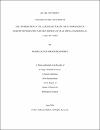The Contribution Of Toll-Like Receptors In The Pathogenesis Of Diabetic Retinopathy In Human Microvascular Retinal Endothelial Cells In Vitro
Abstract
Background: Diabetes Mellitus is a chronic systemic inflammatory disease including the eye causing macrovascular as well as microvascular complications known as diabetic retinopathy (DR), thus increasing the risk of vision impairment and blindness among working adults. The activation of the innate immune system during diabetes leads to an increase in certain biomarkers which in turn can antagonize the immune system leading to more complications. Toll like receptors (TLRs) are receptors of the innate immune system, known as pattern recognition receptors, among them TLR4 recently been linked to DR, but scanty data are available. Thus, this research focus on providing insight into the role of TLR4 in the pathogenesis of DR. Human microvascular retinal endothelial cells (HMVRECs) was used to evaluate the contribution of TLR4 in the pathogenesis of DR.
Methods: HMVRECs have been treated with high glucose (30 mM) and normal glucose (5.5mM) in addition to antioxidants, and the expression of TLR4, TLR2, NFkB and VEGFA mRNA are measured. The barrier function was assessed by trans electrical resistance impedance using ECIS (Applied Biophysics) in comparison to TLR4 siRNA-transfected cells treated in the same way. TNF-alpha was measured by the Elisa technique.
Results: High glucose treatment increases the mRNA expression of TLR4 while the TLR4 siRNA-transfected HG-treated cells attenuates the TLR4 mRNA expression. On the contrary, the inflammation (NFKB expression and TNF-alpha) was not attenuated by silencing TLR4. Additionally, antioxidant treatment did not help the cells to regain normal behavior when TLR4 was silenced. The barrier function disorder observed in normal cells exposed to HG did not improve significantly by silencing TLR4 in these cells.
Conclusion: Hyperglycemia induces TLR4 expression, and its downstream signaling induces inflammation, but silencing TLR4 does not restore normal barrier function, indicating that TLR4 alone does not contribute to the pathogenesis of DR.
DOI/handle
http://hdl.handle.net/10576/5591Collections
- Biomedical Sciences [66 items ]


